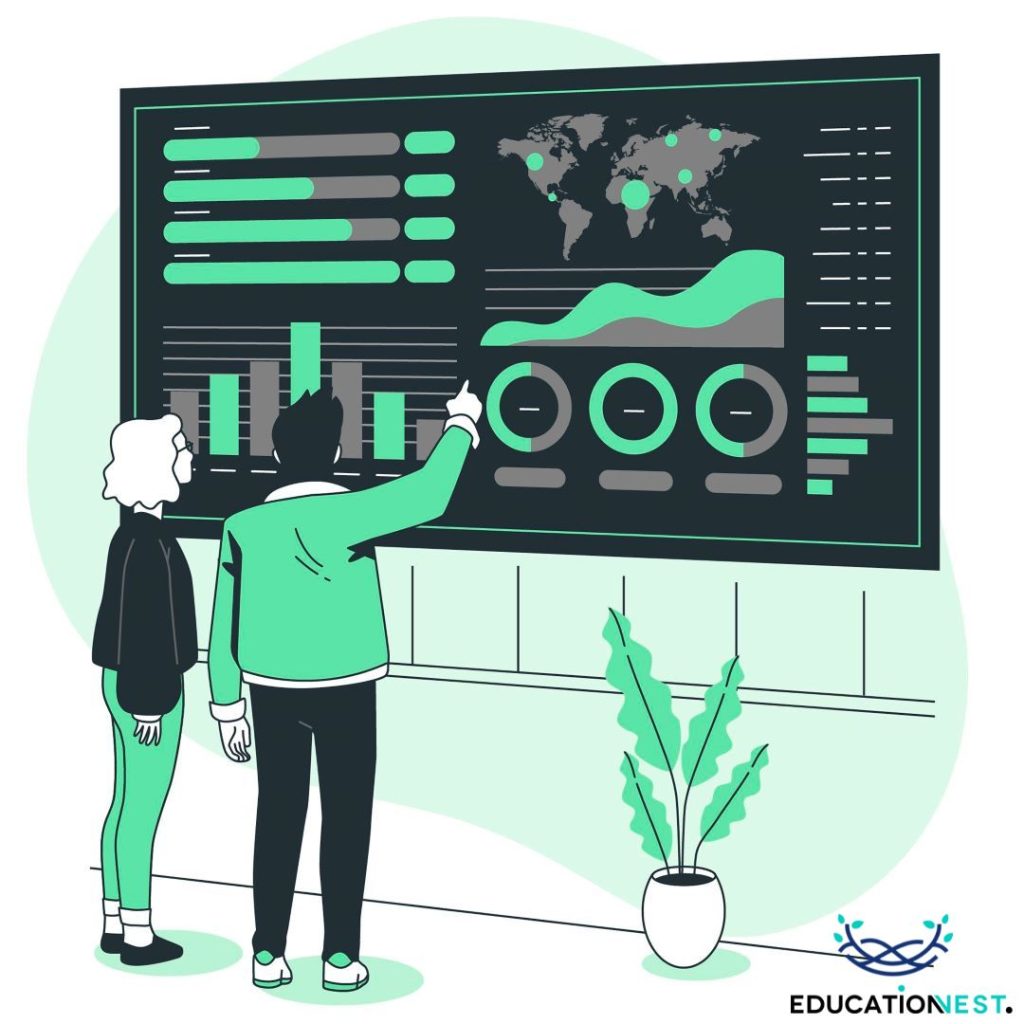In recent times, understanding data is very helpful for all the organizations as data provides crucial information about the customers, latest trends in the industry and customer preferences and insights. But using data visualization is gaining importance as how you can present the complex data in the simpler form to make it more understandable for the organizations.
In this blog post, we will discuss data visualization, how to present data effectively and tools used to visualize data.
What is Data Visualization?

Data visualization is presenting the data may be complex or easy to interpret in the graphical and pictorial forms. This is done to make the data easy to understand and get useful insights from the data. It can be in the form of tables, pie charts, bar graphs or line graphs.
This is useful for the people who don’t have technical knowledge of data to understand the data in simpler forms. The purpose of data visualization is to make informed decisions and add colors to the bland data.
Benefits of Data Visualization
- Better representation: people understand things better when they are in their simplest forms. By data visualization we can put complex data in a better manner which is useful for data interpretation.
- Visualize the relationship: it’s always easy to spot the relationship and patterns in the data when presented in simpler form.
- Accessible: data visualization makes it easy to understand for the people who have less or no technical knowledge and more people can access the data.
Tools for Data Visualization
There are a lot of data visualization tools available in the market. It depends on your needs, which one to choose. Let’s look into different data visualization tools available:
Tableau
One of the most used tools for data visualization is tableau which offers interactive visualization to more than 60,000 companies.
It provides integration for advanced databases. Tableau makes it easy to build visualizations and graphics from large, constantly changing datasets like Teradata, SAP, My SQL, Amazon AWS, and Hadoop. These datasets are used in artificial intelligence, machine learning, and Big Data applications.
Advantages:
- Easy to use
- Best in class performance
- Easy to use on mobile
- Supports diverse data sources
Dundas BI
Dundas BI offers highly customizable data visualizations with dynamic scorecards, maps, gauges, and charts. This makes it easier to make ad-hoc, multi-page reports. Dundas BI makes the process of cleaning, inspecting, transforming, and modeling big datasets easier by giving users full control over visual features.
Advantages:
- Very flexible
- Large forms of data charts and sources
- Good variety of built-in features
Also Read:
A Guide To Latest Data Visualization Trends In 2023
JupyteR
One of the best tools for visualizing data is JupyteR, a web-based app that lets users make and share documents with visualizations, equations, narrative text, and live code. Jupyter is great for cleaning and transforming data, statistical models, numerical simulation, interactive computing, and machine learning.
Advantages:
- Good visual results
- Helps to share data easily
Zoho reports
Zoho results, which is also known as Zoho Analytics, is a complete tool for visualizing data. It combines Business Intelligence and online reporting services to make it easy to create and share detailed results in minutes. The high-quality tool for visualizing data also lets you bring in Big Data from major databases and apps.
Advantages:
- Good customer support
- Good report creation
- Good modification
Google Charts
One of the biggest players in data visualization. Google charts coded with HTML 5 and SVG is known for its strength to generate pictorial and graphical data visualizations. It provides zoom functionality and also provides cross platform compatibility.
Advantages:
- Easy to use platform
- Integrated data
- Visually good data graphs
What is Heatmap Visualization?
Heatmap is the method to represent data in a coded color matrix which provides the main point or summary of the data. The main point of using heatmap is to reveal the pattern, insights and trends in the data by marking values. It can be applied to different types of data.
Types of heatmaps in data visualization
- Spatial heatmap: it is also known as geographic heatmap, it visualize data based on geographic locations. This kind of heat map is useful for showing spatial patterns like density of the population, outbreaks of disease and patterns of weather.
- Grid heatmap: It is also known as intensity heatmap, mainly used to visualize data in the tabular form. Mainly used to analyze the data in multivariate data and compare multiple variables.
Conclusion
Understanding the data is the main thing for any organization and data visualization helps to understand the data. Data visualization presents the data in the simpler form and makes it accessible for the people. In this blog post we tried to cover all the important tools used for data visualization.
